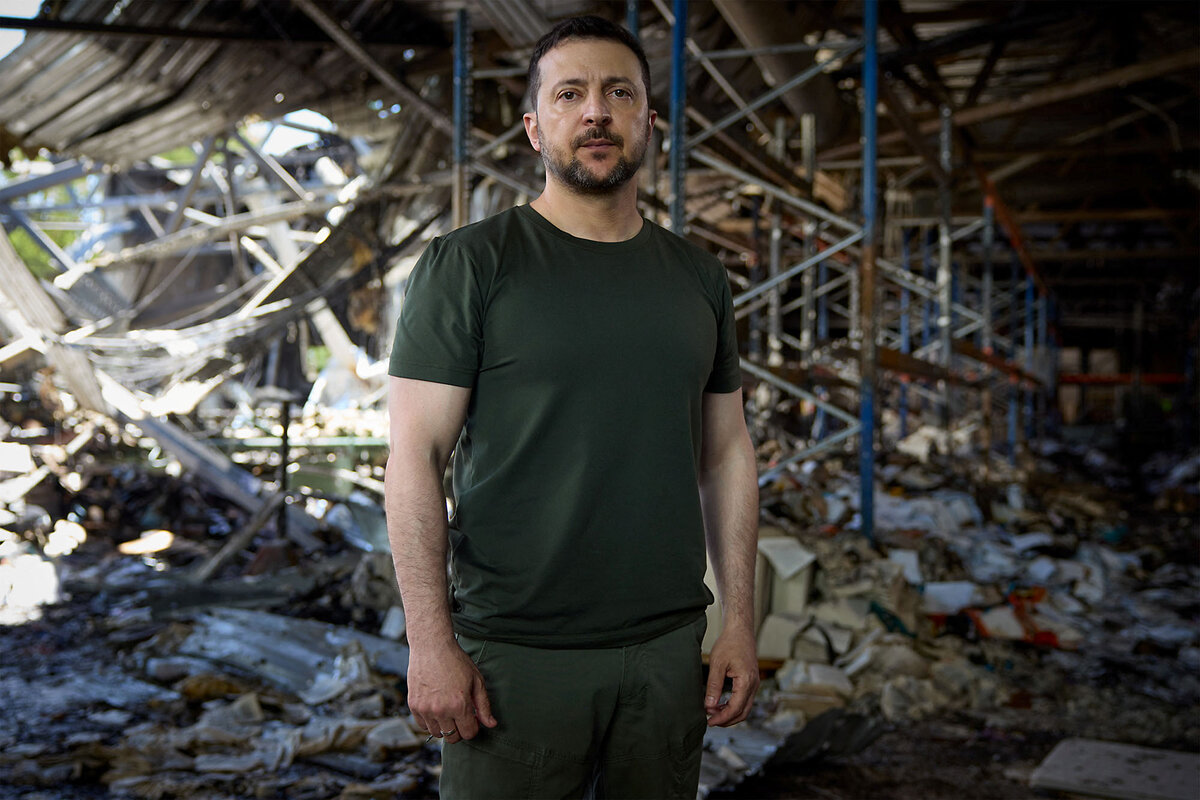Kharkiv hails Biden’s OK to strike inside Russia: ‘We’ve been waiting’
Loading...
| Kharkiv, Ukraine
The news that President Joe Biden will authorize Ukraine to use U.S.-provided weapons to strike inside Russian territory along the Kharkiv region’s front lines was received here Friday with relief and appreciation – but also regret.
Just the night before, Russian glide bombs launched from aircraft in Russian airspace struck in Kharkiv, Ukraine’s second largest city, located just 19 miles from the Russian border. At least six civilians were killed when an apartment building was hit, although a search for the missing continued Friday.
Earlier this month, two guided bombs struck a building supply superstore crowded with civilians – including shoppers picking up materials to repair the damage inflicted as Russia has picked up the pace of its attacks on the Kharkiv region. At least 16 were killed in that attack, and dozens injured.
Why We Wrote This
A story focused onThroughout the war in Ukraine, a recurring theme has been Kyiv’s gratitude for U.S. military aid tinged with impatience over its timeliness. President Joe Biden’s decision to allow use of U.S. weapons against some targets in Russia fits the pattern.
If Mr. Biden’s decision had come earlier, some here say, maybe some of these tragedies could have been avoided.
Still, the predominant sentiment among military and other sources here is a confidence that Ukraine will be able to reap the benefits of this decision by targeting more effectively the Russian forces and installations concentrated just across the international border.
And that in turn should allow Ukrainian forces to stymie the surprise offensive that Russia launched into the Kharkiv region this month.
“We have to be able to strike the air bases inside Russia where the aircraft that launch these bombs that are hitting in Kharkiv take off. We have to be able to target the bases where their troops that are carrying out their offensive gather and prepare to attack our villages,” says Col. Yurii Povkh, spokesperson for the Kharkiv Operational Tactical Group.
“It’s much more efficient and effective to fight the reasons we’re taking these hits,” he adds, “than to simply fight the consequences,” such as the Russian offensive, which left border villages scorched and hundreds of civilians frantically evacuating to safer ground.
Scorched earth
“We’ve been waiting for this permission” from Mr. Biden, says Gregory Shcherban, a volunteer with Kharkiv Media Hub, a local nongovernmental organization that helps international reporters get the Kharkiv story. “Of course we might have avoided some of these tragedies if this had come earlier.”
Mr. Shcherban’s work took him last week to Vovchansk, one of the border villages where Russian forces moved in with a scorched-earth strategy, burning, smashing, and targeting everything in their path. He ended up using his red van to evacuate as many residents as he could – including one terrified farmer’s bleating goats.
“These people fear this will be their last trip from their homes,” he says. “We have to be able to strike the military bases inside Russia where these operations are being prepared and organized.”
President Biden has been reluctant to allow Ukraine to use U.S.-supplied weapons to target military facilities inside Russia over concerns it could lead to a direct conflict between two nuclear superpowers. Indeed, Russian President Vladimir Putin responded to speculation earlier this week that Mr. Biden’s decision was coming by again warning that any such green light would risk nuclear war.
But pressure has mounted over recent months – from some members of Congress and some NATO countries – for the United States to relax the ban.
In the end, two key factors finally pushed Mr. Biden across the line, some diplomatic analysts believe.
One was the alarming assessment of conditions around Kharkiv that Secretary of State Antony Blinken delivered to the president after visiting Kyiv earlier this month. According to officials, Mr. Blinken reported that not just the border region but the city of Kharkiv could fall if Russia’s advance was not effectively countered.
A second concern, some analysts say, was the prospect of dark news about the war in Ukraine landing just as Mr. Biden is to host NATO partners in Washington for the Alliance’s 75th anniversary summit in July.
The limited OK to use the U.S. weapons to strike inside Russia comes even as Ukraine begins to reap the benefits of the $60 billion military assistance package Congress approved last month.
Along the 900-mile-long front lines in eastern and northern Ukraine, military units that just weeks ago complained of a debilitating lack of artillery shells and other munitions are reporting an ability to once again match their Russian adversaries.
Defensive posture
Pentagon officials say privately that a ramping up of weapons deliveries will take time and will continue well into the summer. And most Ukrainian military analysts caution that the fresh arms deliveries should not prompt sky-high expectations.
“We have to be realistic, at least until the end of summer we will have to be in a defensive position,” says Oleksandr Kovalenko, military and political director of the Informational Resistance Group, a Kyiv-based defense think tank. “We lost too many opportunities and suffered high losses during the months when we were receiving no arms supplies from our partners.”
Mr. Kovalenko says he believes Russia’s aim in Kharkiv is to occupy neither the region, nor a city that before the war counted over 1.4 million residents. “Their objectives are more political,” he says, aimed at disheartening the public, destroying the economy, and thinning out the population.
If that’s the case, President Biden’s greenlighting of strikes inside Russia could be one antidote, Colonel Povkh says.
“People in Kharkiv ask me all the time, ‘When are you going to push these terrorists away from the border and stop these attacks on our homes?’” he says. “I’m sure this [decision] will lift our citizens’ morale and raise their sense of security about living here.”
Oleksandr Naselenko assisted in reporting this story.









